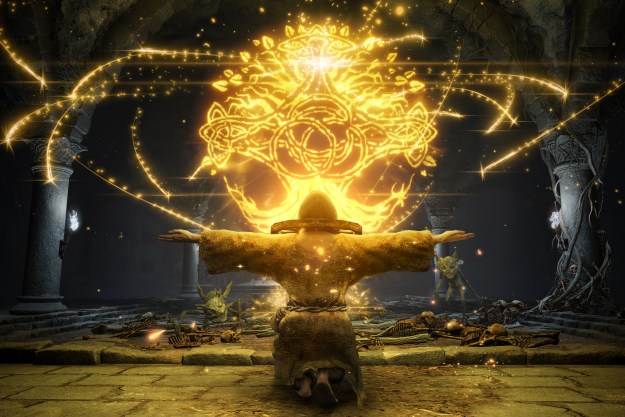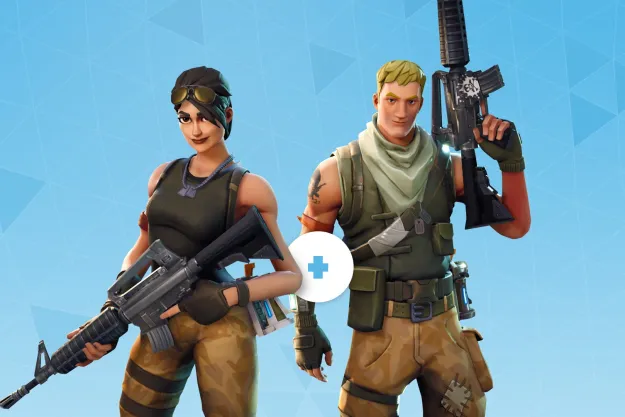The most striking thing about Media Molecule‘s Dreams is just how much stuff it includes.
The LittleBigPlanet developer’s new PlayStation 4 project is, in easiest-to-understand terms, a game engine. It’s built to provide users with all kinds of tools to make just about anything. But unlike titles like Super Mario Maker or those in the LittleBigPlanet series, which provided players with the tools to build their own levels using the art assets, physics and music of their base games, Dreams is much more robust.
In essence, it’ll turn the PlayStation community into one big game studio. Or movie studio. Or music studio. In fact, it’ll be a combination of all three, in addition to being a giant compendium of user-made games and movies that anybody can play and watch.
Super Anything Maker
Media Molecule gave a closed-door presentation to journalists this weekend at Sony’s PlayStation Experience conference to show just how sprawling Dreams really is. As the developers described, the package has a lot of layers. At its highest level, Dreams is a game — Media Molecule is shipping a playable experience made within Dreams that serves both as a standalone piece of entertainment and an introduction to its greater capabilities.

If you never want to do anything but play, the plan is that you’ll have plenty of content to work through and never really need to go deeper. Like LBP or Super Mario Maker, users will upload their creations to online servers where any other Dreams player can access them. What’s more, the game supports curation like what’s seen on Valve’s PC portal, Steam. Play a cool level and you can recommend it to others, or use it to build a playlist of other cool levels or games, stringing them together into an experience. Think of it like making mix tapes of video games.
But creation is possible at just about every level of Dreams as well. Media Molecule has already built tons of elements that can be used to make stuff — from art assets and characters to music, animations and even physics programming. You could start with an existing level and remix it into something new, or build a game piecemeal out of stuff you pull from the shared pool of content. Then, again, you’re able to share it online with everyone, or just a select group of people if you prefer. You could also keep it all to yourself on your PS4 forever and ever.
If you never want to do anything but play, the plan is that you’ll have plenty of content to try.
The level of capability in Dreams is sort of shocking, as if Media Molecule bundled Unity, Garage Band, Final Cut and Photoshop into one package, along with a social network. Want a new character for your creation? Sculpt, paint or draw it. Want to give it custom animations? Dreams can do that, too. Need a piece of music for your movie or level? Compose it yourself.
The ultimate goal is that, as users create and upload stuff, the growing compendium of shareable elements that anyone can use will form the backbone of a massive, collaborative community. And if you use someone’s original music or their original character or their original animations in your level, Dreams automatically credits them in your creation — which makes it possible for others to see who made what, and potentially follow that person, commend them, and find their other work.
But while Dreams’ capabilities are complex, using it is meant to be as simple as possible. Most everything can be controlled intuitively with the motion capabilities of the DualShock 4 controller, and the developers said they’re working to make performance the means by which things are added to the game. That means if you want to add a simple animation to something, like moving a platform back and forth for a character to jump onto, you just select the object, set the game to record an animation, and then move your controller however you want the platform to move. Stop recording and the animation is there in the game.
There are more robust, fine-grained animation options available as well, but the software is built to make it as easy as possible for just about anyone to pick it up and get what they want out of it.
We were surprised by what they developers whipped up in even an hour-long session. They quickly spun out a short level, made from one of the packaged experiences that’ll be included when the game ships, turning a forest scene into a platforming area with a bridge crossing a span of lava. Dropping in an animated sign, cued to trigger when the player character stepped into a certain area, took only a couple of seconds. Adding music to the level was just as easy — as was altering and remixing any of the original elements to create something new.
A bottomless game
Media Molecule also showed off a few things its developers had already created with the game, as part of what’s expected to be a five-hour experience that spans a few different game genres and art styles. One was a child-like platforming game with animated animals for characters on a painterly landscape; another was a noir-style point-and-click adventure game.
The best way to think about Dreams is almost as an educational experience
One developer had spent a sick day creating a playable music video, with the song only changing as the character moved through the game level: Stop at any point, and the song would loop endlessly, but continue forward and new instruments would join the mix while character animations and lights around the level synced to the beat.
Though things created in Dreams are part of its ecosystem, they’re not necessarily locked there. The game makes use of the PS4’s existing Share button capabilities to enable exporting movies, images, and music created within the engine, so you’re not stuck waiting for your friends to buy Dreams in order to see the movie you made with it. Media Molecule also plans to support the game after launch with new capabilities for the community.
First on the docket is PlayStation VR support, allowing users to create experiences around themselves as they feel physically present in the space. Google’s VR painting software Tilt Brush is a good comparison to the sort of 3D sculpting and drawing VR will bring to the package, with the help of Sony’s PlayStation Move motion controllers. But even with just the out-of-the-box PlayStation 4 hardware, Media Molecule wants everyone to have as easy a time as possible creating things within the game.

The best way to think about Dreams, it seems, is as an almost educational experience. It’ll be geared toward universal accessibility, so don’t expect tons of R-rated content to populate its online sharing spaces. But Media Molecule isn’t ruling out the idea that its community might want and need an area that includes more adult material. That doesn’t mean anything pornographic will make the cut, but the ability to make things that are darker or more violent might not be completely off the table for the future of Dreams. At launch, though, as with LittleBigPlanet, things that aren’t exactly kid-friendly, and users who try to use the creation system to grief other people, will be tightly policed.
Dream big
Still, the range of things that users can create is staggering, considering what’s available in the package, and how accessible it is. It’s not an exaggeration to say that Dreams is a music creator, animation kit, movie editor and game development tool all in one package. Media Molecule means for Dreams to support its users no matter what level of dedication they’re willing or able to give it — whether it’s just playing content, curating it for others, or developing it from scratch.
All of those activities are tracked through an online persona that lets users create a Dreams identity, and shows others who you are and what you do within the system. It’s not only a giant creation community, it’s also something like a Facebook or a Pinterest for making stuff.
There’s no release date for Dreams just yet beyond being targeted for 2018, but it’s hard not to see a lot of possibilities within it. If the level of dedication by users in creating mods for games like The Elder Scrolls V: Skyrim, making movies in Valve’s Source Engine, and sharing levels in Super Mario Maker and LittleBigPlanet are any indication, Dreams could easily be the most exciting and interesting release of 2018.
Editors' Recommendations
- The best games on PlayStation Plus, Extra, and Premium
- PlayStation VR2 production reportedly paused by Sony
- The best PS5 games for 2024
- You can play as Resident Evil 4’s Leon Kennedy in Tekken 8 … sort of
- PS5 slim vs. PS5: everything you need to know about the new PS5 model


